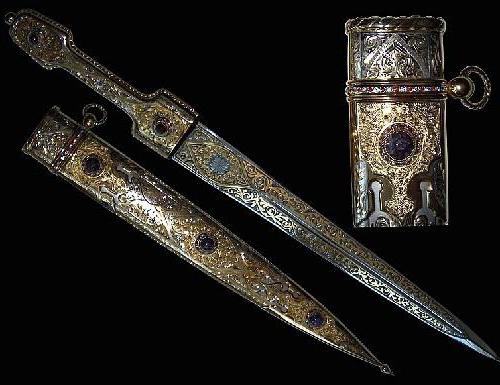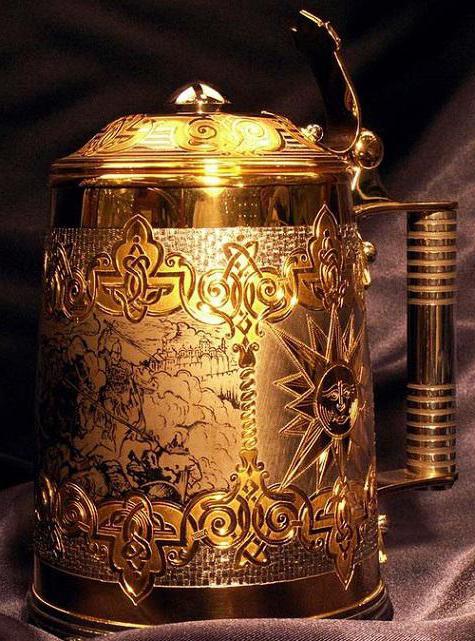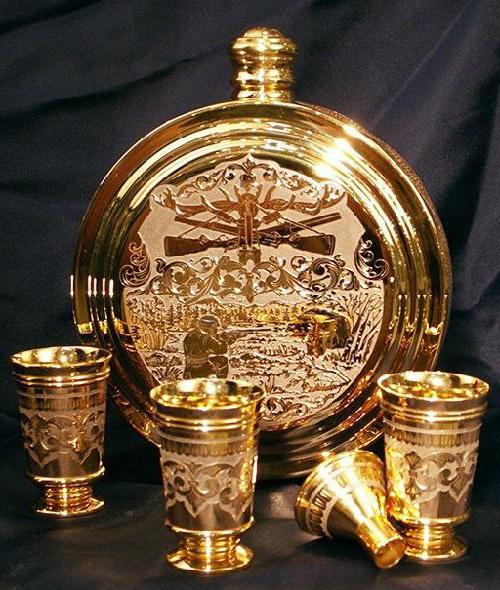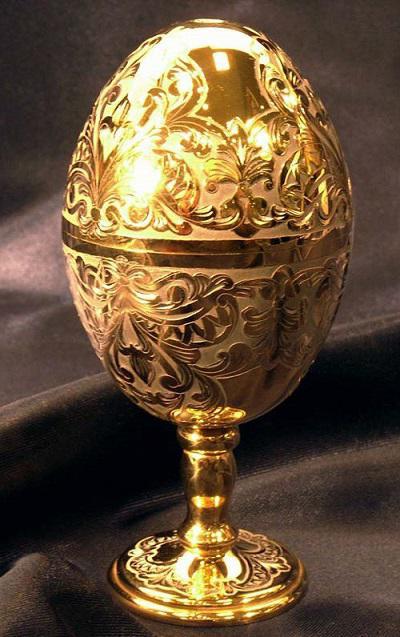Zlatoust is a small city in the Chelyabinsk region with a population of less than two hundred thousand people. He is well known to weapons experts, art historians and edged weapons collectors in many countries around the world. Subtle and graceful color engraving on steel, covering metal products of excellent quality, brought glory to the city. Kings, General Secretaries of the Central Committee of the CPSU and the Presidents of the Russian Federation presented the products of the Ural masters to their foreign friends.
Zlatoust engravings adorn edged weapons and home furnishings and household items - caskets, cigarette cases, writing instruments, very often engraving is used in the manufacture of cult objects - pots, candlesticks, donors and salaries for icons. Medals, orders, sports cups are also the fruits of the work of engravers.
Edged weapons as a matter of prestige
Zlatoust - a city where they know a lot about blades.
Melee weapons are designed to perform two tasks.
The first is convenience when used for its intended purpose. This means that the metal should be easy to sharpen and straighten, remain sharp for a long time, be resilient, strong, moderately flexible and not rust. Handle and scabbard - a separate article. In the best examples of weapons, the handle has curves that repeat the anatomical structure of the hand, and is, as it were, a natural extension of the hand. The scabbard, respectively, is a continuation of the blade. Properly designed and executed, they do not cling to clothes, are not too heavy, are not cramped and do not fall. The length, shape, bending, plate thickness - everything matters.
The second is prestige. By the way the blade looks, it is customary to judge the dignity of its owner. For this reason, the hilt and scabbard for the nobility are decorated with precious stones, gold and silver coinage, drawings and inscriptions.
Zlatoust knives today, as before, meet all the requirements of the standard. The famous award officer daggers are still made in the workshops of a small Ural city.
Production of Zlatoust Blade
In the manufacture of any art object, all stages are important. Chrysostom engraving on steel is no exception. Production technology is not a secret. In the libraries you can find guides on all issues. Metal alloy compositions, acid formulas for etching and varnishes are also available. The art of engraving is taught at the Zlatoust branch of the Ural State University. Since 1996, anyone can enter the specialty "Technology of artistic processing of materials."
However, genuine high art is not only technology. It is no coincidence that the works of only a small part of the masters go to museums and receive awards at world competitions. Chrysostom has something to be proud of.

The museums of Great Britain and Germany are proud of the collections of metal products created by the Zlatoust craftsmen. What is the secret of such popularity? The fact is that local engravers own all the techniques of working with metal, and this is chasing, and notching, and glazing, and blackening, and etching, and electroplating, and tausing. For some time, stone carving has also been added, because very beautiful interior items are obtained from the Ural gems. Miniature engravings with inlaid stone, made with good taste and observing the traditions of antiquity, are always in demand. In addition, the history of engraving is the story of an ever-evolving art form. From its inception to the present, the Ural masters do not stop learning. The piggy bank of artistic metalworking techniques continues to replenish today.
Occurrence of fishing
In 1754, in the Urals, in the Ai River Valley , by the Highest Decree of His Imperial Majesty, it was ordered to build an ironworks. The town that grew nearby was named in honor of St. John Chrysostom.
To organize production in 1815, good engravers were invited from the Solingen factory from Germany, father and son Shafa, and only three years later the Emperor could see the fruits of their activities - the first batch of nineteen blades was delivered to the capital. I liked the work and received the highest approval.
Together with the Shafs and under their leadership, talented Ural masters mastered a new production. Their names remained in history as the names of the founders of a whole trend in art, known as color engraving on steel. These are Yefim and Ivan Bushuev, Maxim, Fedor and Peter Telezhnikovs, Arkhip Lepeshkov, Fedor Strizhev, Ivan Boyarshinov and others.
Schafs are adherents of old German traditions. They knew very well what a perfect engraving should look like. A description of the requirements for the standard would take more than one page. At a minimum, the drawing should resemble the best examples of Solingen masters - to be thin, flat and monochrome. Shafa for a long time did not allow local to put their ideas into practice. The Germans scratched the patterns on the metal plate with a needle. Acid etching was used only as the final processing step. German instruments were distinguished by increased hardness and fineness. The drawings were very small and elaborate. The plots were repeated to one degree or another.
The Germans lived separately in a settlement and did not seek close contact with the locals. They worked properly, were friendly, but at work they kept aloof and very reluctant to share their knowledge.
The Zlatoust engravings of that time are easily recognizable for authorship. The drawing is placed on the sheath and handle. The lines are thin, graceful, the drawing is small, a great emphasis on drawing details.
Features of the Russian style
The students, in addition to those drawings that they learned from Shafov, began to depict scenes from the military and peaceful life of their native country, mythological subjects - they were not afraid to show imagination when choosing engraving techniques. The native nature and fauna of the Urals are also embodied in their drawings. Russian masters excelled their teachers in many ways. They learned to use etching to produce different colors and shades. By changing the composition of the acid and the duration of the chemical reaction, they achieved amazing results. In their hands, the Zlatoust knives turned into unique works of high art, which are not ashamed to donate even to kings.
Ivanka-winged
The emergence of a unique artistic style is usually associated with the name of Ivan Bushuyev. He grew up in a family of hereditary gunsmiths. He studied drawing with fellow countrymen. In the Urals, they have been engaged in steelmaking since ancient times. At the Demidov factories, ore was smelted, their own damask steel was brewed, and weapons were made. By the time of the Zlatoust plant, the traditions of working with metal were completely formed. Ivan Bushuev is the most famous name in Zlatoust. He was incredibly talented and hardworking. The Ural master combined knowledge and skills learned from fellow countrymen with the German manner of engraving. He was a decoration genius. He himself forged blades and applied drawings to them. His works are kept in the Armory of the Moscow Kremlin. Pavel Bazhov immortalized the name of the master in the tale "Ivanka-winged". The famous winged horse, the symbol of Chrysostom, is a tribute to memory and respect.
Ivan Bushuev had a very subtle sense of proportion, perfectly respected proportions. His manner is absolutely recognizable. Bushuyevskie characters are not static, like the Germans. In his people, beasts - life, movement. It is no coincidence that the coat of arms of Zlatoust is a golden winged horse rushing towards the wind. Engravings by Ivan Bushuyev often include horses. By turning the head, the position of the body, legs, tail, even ears, it is easy to determine how the animal depicted by the artist feels. Did the angel move the hand of the master when he held a needle scratching the varnish?
Fire gilding
Ivan Bushuev spared neither time nor energy to create the engraving. He even invented his own method of gold jewelry.
The master knew the technology and knew how to make blades at all stages, starting with the separation of ore. He knew the subtleties of the smelting craft, he knew how to forge metal, make varnishes and mixtures for etching, but most of all Ivan liked the art of engraving. He himself came up with stories, drew them on paper, then reduced them to the desired size, prepared a plate and applied a drawing to it. Preparation of the product for engraving consisted in thorough polishing and varnishing. Then, using an oil torch, the knife or scabbard was covered with a layer of soot. Next, the object was clamped in a vice and painted a conceived picture. If everything worked out well, and the plot fit into the narrow space of the product, then it was possible to proceed to the most critical part of the work. The craftsman scratched the drawing applied to the blackened surface with a needle, removing the varnish to metal. After that, he dissolved gold in mercury and placed it in a small suede pouch. The engraved object was heated to a very high temperature and drove this pouch over a hot surface. Mercury evaporated and liquid gold melted into the metal. Bushuyev cleaned the cooled blade or scabbard of varnish. It is also a difficult operation. It is called etching. Depending on the composition of the acid, a shade of a different color than the base metal remained on the metal.

Mercury vapors released during heating are very harmful to health. Few hot gold engravers survived to forty. Ivan Bushuev died in 1835. He was 37.
Famous works
The works of the Zlatoust masters are of great interest not only from the point of view of art, but also as historical documents. Two blades made in the first quarter of the 19th century have survived. Miniature drawings are depicted on them, depicting the stages of labor preceding the appearance of this subject. This is ore mining, and smelting of metal, and casting, and forging, and engraving, and delivery to the king, and delivery to the hero. Blades are very similar to each other. It can be seen that they were made by the masters of one school, but on one we see angel-like babies, and on the other - ordinary adults. The ancient Zlatoust engraving is an antique that is valued very dearly, especially considering that at that time the craftsmen were actively working with gold, silver and precious stones. For the needs of the imperial family, various items were regularly ordered in the workshops of the Zlatoust plant, and not only weapons. Grand Duke Alexander, the heir to the Russian throne, Ivan Bushuev with a group of comrades made armor similar to medieval. This unique thing can be seen in one of the halls of the Zlatoust Museum of Local Lore.

Pavel Petrovich Anosov
Engraving of Zlatoust, as a national folk craft of Russia, owes much to the work of Pavel Petrovich Anosov. This man had a great influence not only on the formation and promotion of unique art, but also on the development of the mining industry of the Urals. A talented person from a poor family has achieved everything in his life with his own work and talent, without influential patrons and patronage.
Pavel Anosov was orphaned early, and his grandfather, who served as a mechanic at the Izhevsk and Votkinsk factories, took him up to education. That is why, having received a good education in the St. Petersburg Cadet Corps, Pavel Petrovich went to the Zlatoust Mountain District. He was the 22nd year. Starting from the most insignificant position, having gone through all the steps of the career ladder, Anosov got to the position of the head of the Altai mining plants and the governor of the Tomsk province. He died at the age of 54 with the rank of governor general of Tomsk. For his not too long life, he managed to raise and develop the metallurgical industry in the territory entrusted to him. He was a mining engineer and chemist, explored the nature of the Urals and made many discoveries regarding the location of underground mineral deposits.

In 1828, Pavel Petrovich Anosov, then the head of the Zlatoust Metallurgical Plant, received an order from the Mining Department to develop steel that was not inferior in its basic characteristics to the best Damascus and Damascus steel known at that time. The task is architrual, because oriental gunsmiths sacredly kept their secrets for many centuries. Nevertheless, after a large number of studies and experiments, Pavel Petrovich and his colleagues found an exceptionally successful alloy formula, which later glorified the plant, and at the same time the whole of Russia. Russian Bulat Anosov went to the manufacture of knives.
From what Pavel Petrovich did, one can recall the following facts characterizing him as a wonderful person and a good master.
- Anosov achieved a ban on mercury gilding, because it is very harmful to health, and replaced it with galvanic.
- He himself designed machines that facilitate the work of workers.
- During his leadership, the workers of the Zlatoust plant each year were provided with two paid holidays - one before Easter and the second in the summer, during the suffering.
- Pavel Petrovich achieved the opening of educational institutions for children of workers. He established benefits for boys under 12 and for girls under 18.
- On his initiative, work on the study of the properties of metals began to be conducted in an orderly manner, with records of the results of research and experiments. Before him, the production of metal for blades was a matter of intuition and was transmitted orally from master to master. Pavel Anosov himself wrote and published several manuals on mining, including metal hardening, alloy steel, and damask production.
Damask steel was good in all respects and not inferior to the best world standards. Dirks, regular piercing and cutting weapons, axes, hunting daggers and knives from it are still objects of high art. Their antique value exceeds hundreds of thousands of rubles. The moire overflow of Damascus is beautiful, like precious metal. Anosov's artists did not even make murals on it, only near the base. Ample miniature jewelry was applied to the arms and scabbard.
In 1847, the era of P.P. Anosov ended. He went to St. Petersburg with a collection of daggers, hunting knives, caskets, cutlery with handles, inlaid with Ural gems, mirrors and trays. Pavel Petrovich hoped to show these things to senior officials and get permission to expand production, but on the way he fell into a snowstorm. The wagon turned over; it, along with the companion, was crushed by heavy crates and covered with snow. For several days they remained in the grip of brutal elements without hope of salvation. As a result, Anosov became seriously ill. He could not get better and died in the spring of 1851.
Pavel Matveevich Obukhov
For almost 15 years, the Zlatoust plants were left without competent leadership. In the mid-60s, Pavel Matveevich Obukhov was appointed to the post of manager. He managed to get the enterprise out of the crisis. Pavel Matveevich was from a family of hereditary miners. He received an engineering education at the St. Petersburg Mining Institute, which he graduated with a gold medal, then trained in Germany and Belgium, and as a result acquired good managerial and organizing skills. In Zlatoust, he resumed the production process, put in order the extensive scientific heritage left by Anosov, and continued his experiments on alloying steel. Pavel Matveyevich is credited with creating cast steel. It replaced the gun bronze, and now the Zlatoust Metallurgical Plant has become a major supplier of firearms - guns and rifles.
Art workshops also did not stand idle. If Anosov in recent years has been producing mainly damask steel and blades, Obukhov expanded his capacities and added a large assortment of household items to his weapons - caskets, cigarette cases, trays, cutlery. By the way, Pavel Matveevich Obukhov at the enterprise entrusted to him not only implemented his own ideas for improving the work, but also developed and implemented the ideas of Pavel Petrovich Anosov, which are preserved in the notes.
Soviet period
After 1917, the Zlatoust plant continued to operate. Now edged weapons began to be decorated with revolutionary plots and portraits of the leaders of the Communist Party. The place of refined classicism was taken by a rough modern. The emphasis was placed on mass production. The setography method was introduced. The author's style has almost disappeared. Color engraving has grown in size and turned into a panel. The products of Zlatoust craftsmen began to adorn the walls of state institutions. New nickel plating technology has changed the Zlatoust engravings beyond recognition. The drawings became less clear, blurred, much emphasis was placed on the play of light and shadow. This was not so much an engraving as a painting.
Setography allowed to produce large batches of identical panels. Artists transferred to them reproductions of popular paintings by famous authors. Huge portraits of Lenin and Stalin adorned the facades of government offices. For some time, creative thought gave way to mechanical work.
In the 1960s, interest in folk crafts revived again. Vocational and art schools began to open. Engraving Chrysostom received an impetus for a new development. Young graduates of the schools, having received the education of engraving artists, came to the factory and in the workshops that produced household items, revealed their talents. In these years, the names of such beautiful artists as G. Bersenev, A. Bogachev, N. Lokhtacheva, O. Averkin and others sounded.
Present
Today you can hear the opinion that over the past hundred years, Zlatoust engravings as a type of national decorative and applied art have lost relevance. I do not want to agree with this. Zlatoust engraving (the history of the famous craft confirms this) throughout the entire period of its existence has been constantly changing. At first, she was laconic in form and realistic in drawings, inherited from the Germans from Solingen, then the Russian masters added gilding and other decorative techniques, enriched the plots. Further, in the 20th century, the engraving adopted the ideas of mass art and absorbed new modern styles.
The first hundred years left us only a few names of outstanding artists. Their works can be recognized by their handwriting - I. N. Bushuev painted miniatures on themes of myths and military battles. I.P. Boyarshinov liked to work on hunting knives. He engraved hunting scenes on them.
Over the next hundred years, the appearance of metal engraving changed in the same way as social life and human needs. What is called kitsch and consumer goods is the logical result of the victory of the proletarian revolution, which equalized everyone and guaranteed everyone was provided with everything necessary. The pursuit of mass and the socialization of art have led to the fact that the decorative component of the Zlatoust engraving is pretty impoverished. Currently, the art of metal engraving is again acquiring a touch of elitism. There are outstanding masters, but they, as always, can be counted on the fingers. Real high art cannot die, but it cannot stand still - it will always be a breeding ground for identifying talented people and for the birth of new types of art.